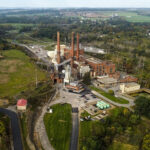Industry losses from asbestos and environmental claims grew 12 percent in 2012, after a 31 percent decline in 2011, A.M. Best reported Monday.
Although a special report by the Oldwick, N.J.-based rating agency reveals that one carrier, American International Group, skewed the annual growth figures in 2010, driving 2011 decline, Best’s analysis reveals that asbestos industry losses have been rising even after adjusting for (normalizing) the AIG figures.
Net incurred losses for asbestos have average $2.0 billion per year over the five-year period ending 2012, according to figures set forth in a special report based on an analysis of statutory annual statement Footnote 33.
Asbestos loss payments have average $2.5 billion per year over the same timeframe, the report reveals.
“A.M. Best anticipates material losses for the industry to continue unabated for years to come,” the report says, noting that the industry has begun to see a “new front opening”—with lung cancer cases being brought alleging injuries caused, at least in part, by exposure to asbestos.
The report titled, “Asbestos Losses Fueled by Rising Number of Lung Cancer Cases,” notes that in the past, asbestos loss costs were driven by very large numbers of plaintiffs seeking relatively modest sums (per person) against a wide array of defendants—including peripheral defendants that weren’t directly involved in the mining or selling of asbestos.
Tort reforms eventually reduced these types of claims, which left insurers paying and reserving for cases that involved seriously injured mesothelioma claimants—cases with higher average costs per claim.
According to Best, these mesothelioma claims continue to be filed at relatively high rates, “confounding the expectations of some that such claims would peak during the mid-2000s.” In addition, a rising volume of lung cancer cases has been added to the mix “as more attorneys seek higher settlements in the face of more successful suits relative to past settlements,” the report says.
The report notes that some participants in asbestos litigation believe that 2- 5 percent of new lung cancers are caused by asbestos exposure. This would translate into roughly 3,000 to 5,000 new cases per year, the report says.
The report also notes potential issues of allocating damages between asbestos and tobacco exposures, referring to medical studies that point to an increased likelihood of developing cancer if an individual is exposed to both asbestos and tobacco.
Noting both the long latency period between exposure to asbestos and the manifestation of mesothelioma, and the rise in the number of lung cancer cases being litigated, Best predicts that asbestos losses for insurers will continue—and could grow, putting upward pressure on the rating ageny’s ultimate industry loss estimate of $85 billion.
The $85 billion has been in place since December 2012.
According to Best’s analysis, 89 percent of this ultimate figure has been funded—through cumulative losses paid through December 31, 2012 plus carried net reserves as of the same date together amounting to $76 billion.
The report also analyzes insurance industry environmental liabilities. On the environmental front, Best’s ultimate loss estimate for the industry stands at $42 billion, which is 90 percent funded through payments and reserves totaling $38 billion. Best notes that the majority of the largest environmental losses have been settled, in most cases with waivers signed to prevent reopening of claims for cleaned sites and newly discovered sites, and that pollution losses have generally stabilized in recent years—with annual incurred losses ranging between $350 million and $800 million.
Unlike the situation with asbestos, A.M. Best expects paid losses for environmental to begin to taper off in coming years.
The report also includes tables listing individual insurer and reinsurer payment and loss reserve data for asbestos and environmental claims. One table reveals that the top 30 groups—ranked by asbestos and environmental reserves—hold 95 percent of the industry’s total net reserves for the two exposures, with Travelers, Berkshire Hathaway and American International Group topping the list.
Analyzing the combined ratio impact of asbestos and environmental losses for the last five years for individual U.S. insurers and reinsurers, Best finds that the majority of companies have experienced only slight earnings drag in recent
years. The three companies experiencing the highest levels of earnings impact—with asbestos and environmental losses adding more than 3 points, on average, to combined ratios over the five years ending2012—are Munich Re America, Fairfax Financial and Allianz/Fireman’s Fund (ignoring the effects of loss portfolio transfers to European parents for Munich Re America and Fireman’s Fund).





















 Swiss Re Execs Sleeping Well After $2.4B Q3 Reserve Boost
Swiss Re Execs Sleeping Well After $2.4B Q3 Reserve Boost  When the Boss Doesn’t Want to Hear About Your Stress
When the Boss Doesn’t Want to Hear About Your Stress  New York Judge Rejects Climate Concerns in Effort to Shutter Bitcoin Mine
New York Judge Rejects Climate Concerns in Effort to Shutter Bitcoin Mine  New Hampshire High Court Invalidates GEICO Underinsured Claim Provision
New Hampshire High Court Invalidates GEICO Underinsured Claim Provision 


